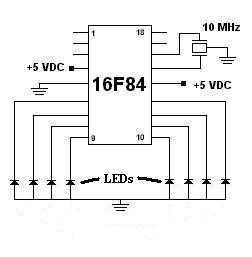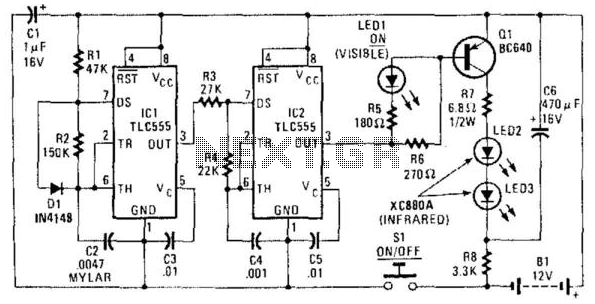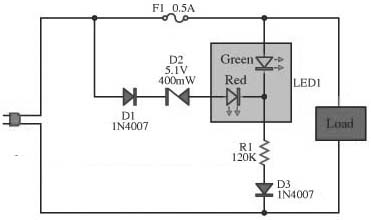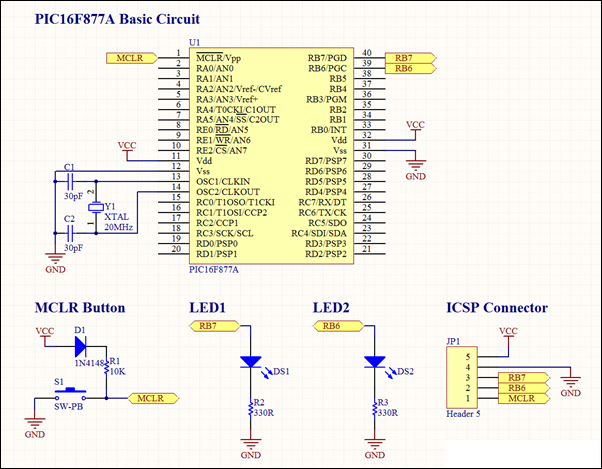
LTC3205 - Multidisplay LED Controller
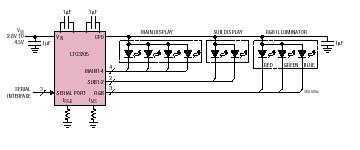
The LTC3205 is a highly integrated multidisplay LED controller. The part contains a high efficiency, low noise fractional step-up/step-down charge pump to provide power for both main and sub white LED displays plus an RGB color LED display. The LTC3205 requires only four small ceramic capacitors plus two resistors to form a complete 3-display LED power supply and current controller.
Maximum currents for the main/sub and RGB displays are set independently with a single resistor. Current for each LED is controlled with an internal current source. Dimming and ON/OFF control for all displays are achieved via a 3-wire serial interface.
The LTC3205 operates as a versatile solution for driving multiple LED displays, making it suitable for applications in consumer electronics, automotive lighting, and decorative lighting systems. The integrated charge pump architecture allows it to efficiently manage power conversion, ensuring that the required voltage levels for the LEDs are maintained while minimizing energy loss.
In the schematic, the four ceramic capacitors are placed strategically to stabilize the charge pump operation and filter noise, which is critical for maintaining the quality of the LED output. The two resistors are used to set the maximum current levels for the main and sub displays, allowing for precise control over the brightness of each LED segment.
The internal current source is designed to provide consistent current regulation across the LED displays, ensuring uniform brightness and color fidelity. The 3-wire serial interface simplifies the control mechanism, allowing for easy integration with microcontrollers or other digital systems. This interface supports dimming functions and ON/OFF control, enabling dynamic lighting effects and energy savings.
Overall, the LTC3205's design and functionality make it an ideal choice for applications requiring efficient, high-performance LED driving capabilities, with the added benefit of minimal external component requirements.The LTC3205 is a highly integrated multidisplay LED controller. The part contains a high efficiency, low noise fractional step-up/step-down charge pump to provide power for both main and sub white LED displays plus an RGB color LED display. The LTC3205 requires only four small ceramic capacitors plus two resistors to form a complete 3-display LED power supply and current controller.
Maximum currents for the main/sub and RGB displays are set independently with a single resistor. Current for each LED is controlled with an internal current source. Dimming and ON/OFF control for all displays are achieved via a 3-wire serial interface. 🔗 External reference
Maximum currents for the main/sub and RGB displays are set independently with a single resistor. Current for each LED is controlled with an internal current source. Dimming and ON/OFF control for all displays are achieved via a 3-wire serial interface.
The LTC3205 operates as a versatile solution for driving multiple LED displays, making it suitable for applications in consumer electronics, automotive lighting, and decorative lighting systems. The integrated charge pump architecture allows it to efficiently manage power conversion, ensuring that the required voltage levels for the LEDs are maintained while minimizing energy loss.
In the schematic, the four ceramic capacitors are placed strategically to stabilize the charge pump operation and filter noise, which is critical for maintaining the quality of the LED output. The two resistors are used to set the maximum current levels for the main and sub displays, allowing for precise control over the brightness of each LED segment.
The internal current source is designed to provide consistent current regulation across the LED displays, ensuring uniform brightness and color fidelity. The 3-wire serial interface simplifies the control mechanism, allowing for easy integration with microcontrollers or other digital systems. This interface supports dimming functions and ON/OFF control, enabling dynamic lighting effects and energy savings.
Overall, the LTC3205's design and functionality make it an ideal choice for applications requiring efficient, high-performance LED driving capabilities, with the added benefit of minimal external component requirements.The LTC3205 is a highly integrated multidisplay LED controller. The part contains a high efficiency, low noise fractional step-up/step-down charge pump to provide power for both main and sub white LED displays plus an RGB color LED display. The LTC3205 requires only four small ceramic capacitors plus two resistors to form a complete 3-display LED power supply and current controller.
Maximum currents for the main/sub and RGB displays are set independently with a single resistor. Current for each LED is controlled with an internal current source. Dimming and ON/OFF control for all displays are achieved via a 3-wire serial interface. 🔗 External reference

